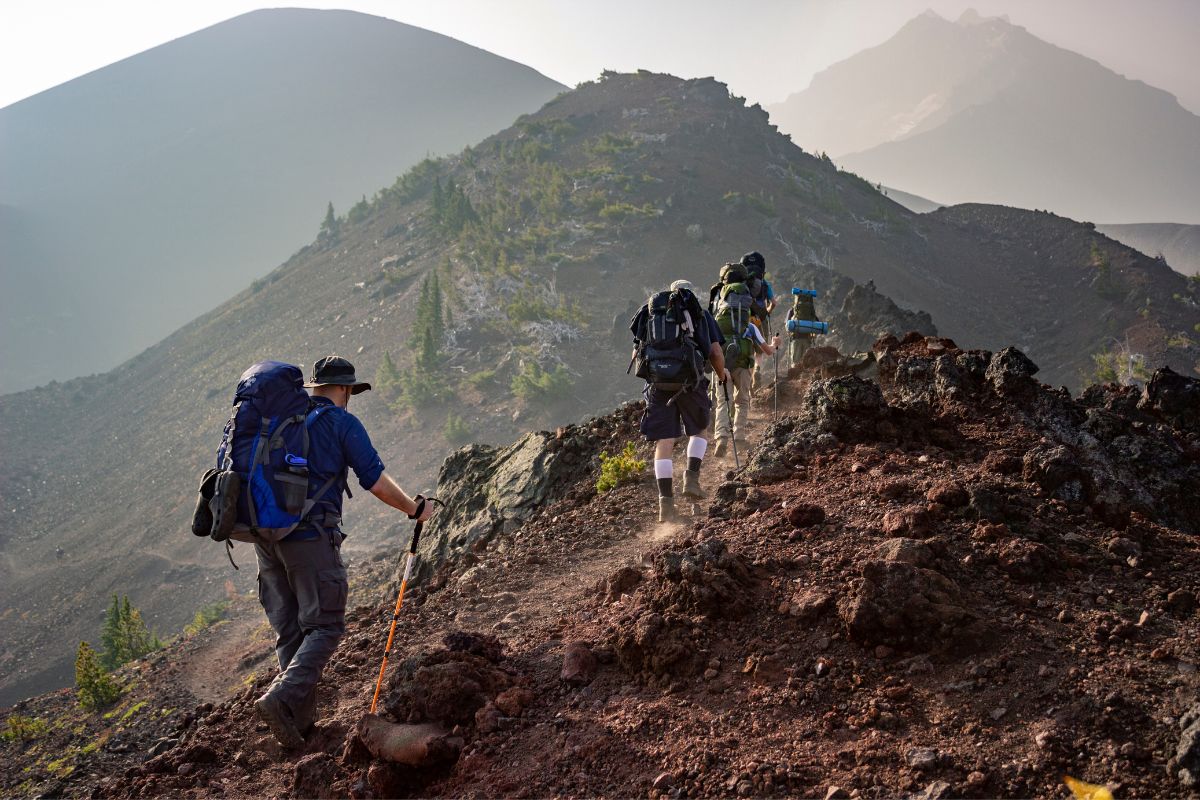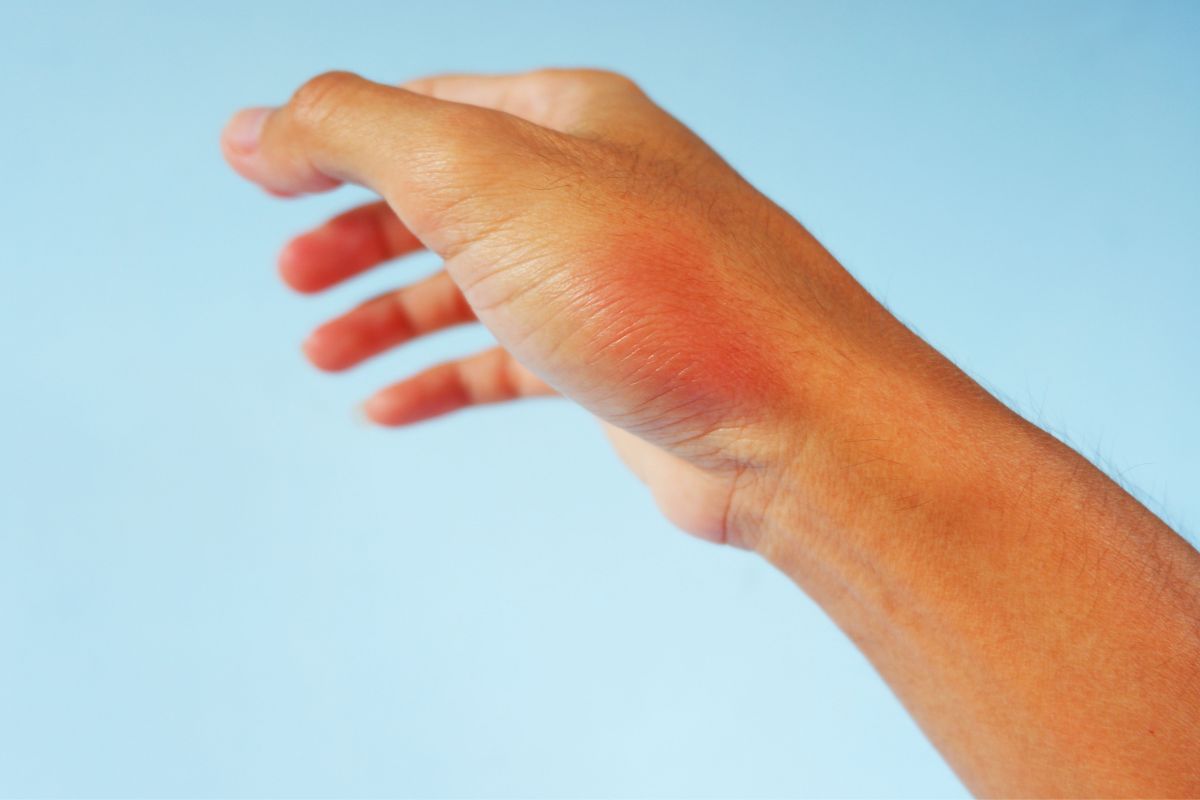Have you ever noticed your hands swelling up while on a hike? It’s a common phenomenon that many hikers experience, but it’s not just a minor inconvenience.
Hand swelling during hiking can lead to discomfort, reduced grip strength, and even a loss of dexterity. Understanding why this happens and how to prevent it is crucial for an enjoyable and safe hiking experience.
In this article, we’ll explore the physiology of hand swelling, the impact of hiking gear, and strategies for reducing swelling. So, let’s get to it and keep those hands happy on your next adventure!
Why Do My Hands Swell When I Hike?
When you engage in physical activity, like hiking, your body’s demand for oxygen increases, and your heart pumps harder to deliver the oxygen-rich blood to your muscles.

As a result, blood vessels in your hands dilate to accommodate the increased blood flow, causing the hands to swell. But that’s not the only reason for hand swelling during hiking; your lymphatic system also plays a crucial role!
The lymphatic system is a network of vessels that circulate lymph fluid throughout your body, helping to remove waste and toxins.
During physical activity, the lymphatic system can become overwhelmed, and the fluid can accumulate in your hands, leading to swelling. Additionally, several factors can affect hand swelling during hiking, such as temperature.
Indeed, in colder temperatures, blood vessels in your hands can constrict, reducing blood flow and causing the hands to feel cold and swollen.
Conversely, in warmer temperatures, your body’s natural response is to increase blood flow to cool the body down, which can cause hand swelling. Moreover, altitude is another factor that can contribute to hand swelling during hiking.
As you ascend to higher altitudes, the air pressure decreases, causing the body to work harder to get enough oxygen, causing blood vessels in your hands to dilate and lymphatic fluid to accumulate, leading to swelling.
Does The Hiking Gear Impact And Swell Our Hands?
Yes, the gear you choose for hiking can also impact your hand swelling, but let’s look at how it can do that. First, let’s talk about gloves.
Wearing gloves can provide protection and insulation for your hands, especially in colder temperatures. However, if the gloves are too tight, they can restrict blood flow and lymphatic fluid, leading to swelling.
On the other hand, if the gloves are too loose, they can rub against your skin, causing irritation and inflammation.

Therefore, it is essential to choose gloves that fit properly and provide adequate protection without being too constricting.
Next, backpacks can also impact hand swelling during hiking, as when you wear a backpack, the straps can put pressure on your shoulders, causing lymphatic fluid to accumulate in your hands.
This can lead to swelling and discomfort and to avoid this, it’s recommended you choose a backpack with padded straps that distribute the weight evenly across your shoulders and back.
In addition to that, you should make sure to adjust the straps so that they’re not too tight or too loose, and pack your backpack as evenly as possible to reduce pressure points.
As you can understand, proper gear and fit are crucial for reducing hand swelling during hiking. So, before you hit the trail, make sure you’re wearing the right gear and that it fits properly.
Take the time to try on different gloves and backpacks to find the ones that work best for you and don’t hesitate to invest in high-quality gear that provides the protection and support you need!
Other Tips For Reducing Hand Swelling During Hiking
Now that we’ve covered how hiking gear can impact hand swelling, we wanted to share some additional tips for reducing hand swelling during hiking.
Hydrate
First and foremost, make sure to stay hydrated, as dehydration can cause your blood vessels to constrict, leading to reduced blood flow and increased hand swelling.
So, make sure to drink plenty of water before, during, and after your hike. If you’re hiking in hot temperatures, you should also consider adding an electrolyte drink to replenish the salts and minerals lost through sweat.
Take A Break
Another tip is to take frequent breaks and elevate your hands above your heart. This can help to reduce lymphatic fluid accumulation and improve blood flow, while you can also try gentle hand exercises and stretches to promote circulation and reduce swelling.
Adjust Your Technique
Finally, consider adjusting your hiking technique to reduce hand swelling. Avoid gripping your trekking poles too tightly, as this can restrict blood flow and cause swelling. Instead, try using a lighter grip or switch up your hand position periodically.
You can also try different hand positions while carrying your backpack to reduce pressure points and swelling.
By incorporating these tips into your hiking routine, you can help to reduce hand swelling and make your hikes more enjoyable and comfortable.
When To Seek Medical Attention
While hand swelling during hiking is often a temporary and minor issue, there are certain signs and symptoms to watch for that may indicate a more serious medical condition.
If your hand swelling is accompanied by severe pain, redness, or warmth, it could be a sign of an infection or injury and should be evaluated by a medical professional.
Other signs to watch for include numbness or tingling, difficulty moving your fingers or hand, or persistent swelling that doesn’t improve with rest and elevation. If you’re ever unsure, it’s always better to err on the side of caution and seek medical attention.
The Bottom Line
There you have it; everything you needed to know about hand swelling during hiking was in this article. In all cases, remember to listen to your body and take breaks as needed, and always choose gear that fits properly and provides adequate support.
With these tips in mind, you can hit the trail with confidence, knowing that you’re equipped to handle any hand swelling that may come your way. Happy hiking!





